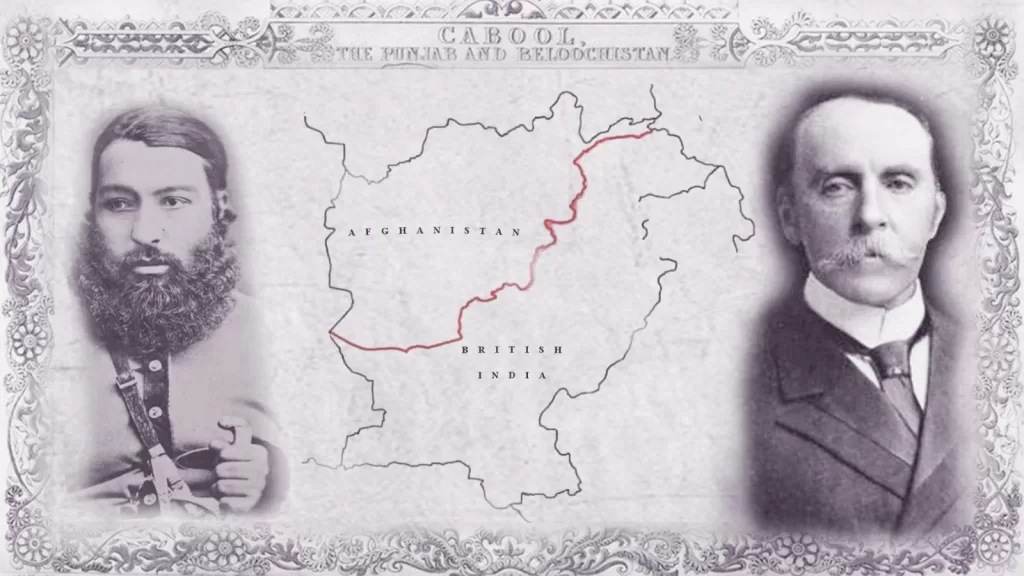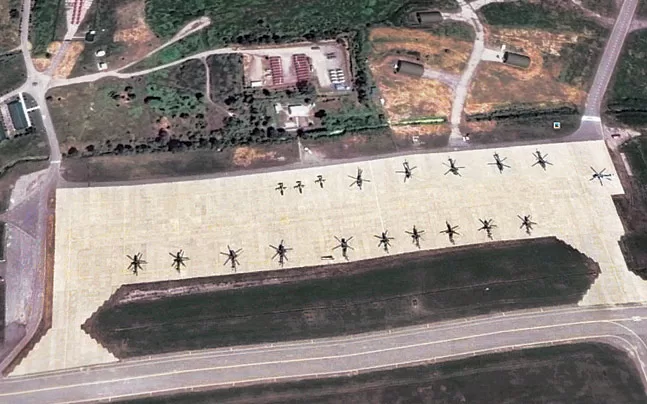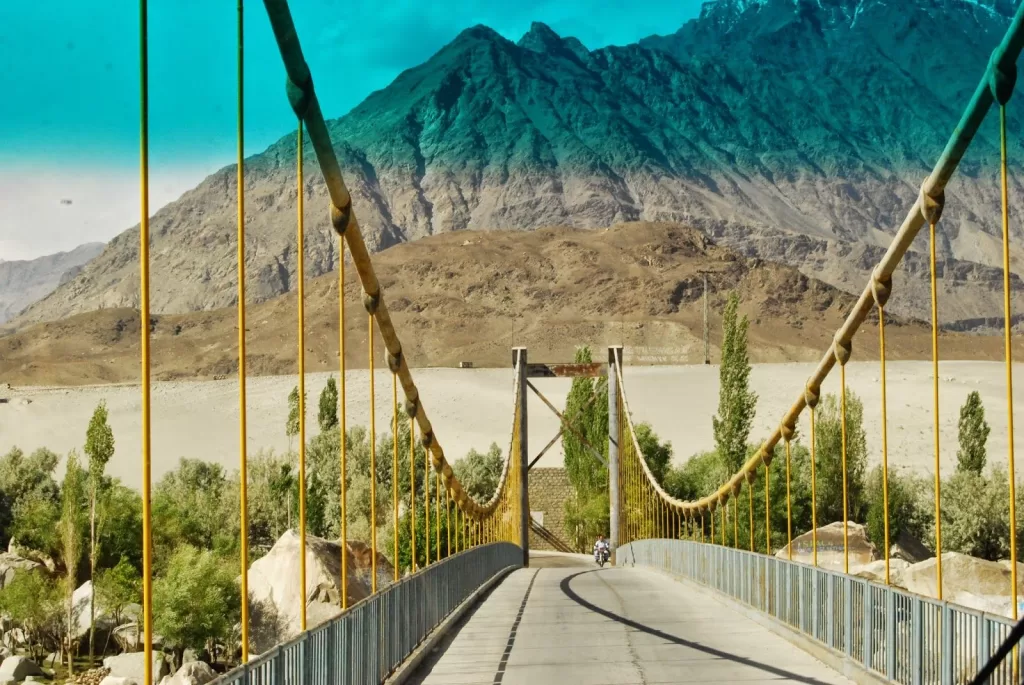Historical Background and Geography
Wakhan Corridor or Wakhan Pamir Corridor is a narrow strip of territory located within the Badakhshan province of Afghanistan. This corridor stretches eastward, connecting Afghanistan to Xinjiang, China. It also separates the Gorno-Badakhshan Autonomous Region of Tajikistan in the north from northern Pakistan in the south. This high mountain valley serves as the source of both the Panj and Pamir rivers, which converge to form the larger Amu River. For countless centuries, a vital trade route has traversed this valley, facilitating the movement of travelers to and from East, South, and Central Asia.
The Wakhan corridor looks like a little funnel sticking out of the country’s (Afghanistan) northeast, connecting Afghanistan to China, if only slightly. The corridor also separates Pakistan from Tajikistan, and that was its original function — although the separated parties then were Britain and Russia.
The catalyst for the ultimate shape of Wakhan’s destiny was a chance meeting in 1891 between the British military explorer Francis Younghusband and his Russian counterpart, Colonel Yanov, at the village of Bozai-Gumbaz, inside the present-day corridor. The meeting ended with Yanov expelling Younghusband from the area, declaring as it was “Russian territory.” Russia later apologized, as this claim went against an earlier agreement assigning Wakhan to Afghanistan. To the British, though, this was symptomatic of Russia’s nibbling at Afghanistan’s northern frontier, which had already cost the local emir the oasis of Panjdeh.
The corridor was formed after an 1893 agreement between Mortimer Durand of the British Raj and Emir Abdur Rahman Khan of Afghanistan, creating the Durand Line. This narrow strip acted as a buffer zone between the Russian Empire and the British Empire (the regions of Russian Turkestan, now in Tajikistan and the northern part of British Raj, now in Pakistan). Its eastern end bordered China’s Xinjiang region, then claimed by the Qing dynasty.
The corridor was the capstone of the British policy of containing Russia, of which the creation of an Afghan buffer state was deemed essential. In the second half of the 19th century, the Russian Empire had been gobbling up the territories around Central Asian cities like Tashkent, Samarkand, Bukhara and Khoqand, and was scratching at the door of British India. Afghanistan, nominally independent but in reality, a British protectorate, was to keep them out. The hole in that strategy was situated in the Pamir Mountains, where any authority was local and international borders nonexistent.
In 1895, Russia and Britain set up a Pamir Boundary Commission, which settled the northern and southern borders of the corridor. It was announced that neither Afghanistan nor China were directly involved. The border was merely meant to separate two superpowers, but ended up having a devastating effect on the local population. Some Kirghiz tribespeople, fleeing first into the Wakhan from Soviet collectivization and then from the Wakhan when communists took over Kabul in 1979, reached Pakistan, only to be resettled by Turkey in Kurdistan. Today the region remains largely in accessible from and ungoverned by Kabul. Much less than a corridor, the Wakhan is a dead end for its people, who often must migrate to cities and mines far beyond their home on the Roof of the World to scrape together a living.
The corridor might seem insignificant in geopolitical terms: a mere 3,500 square miles of “stunted trees and brushwood”, at some locations barely 10 miles wide, tucked away in an inaccessible part of the Pamir Mountains, where the average elevation exceeds 17,000 feet, and inhabited by just over 10,000 subsistence farmers and herders, a mix of local Wakhi and immigrant Kirghiz tribespeople. The famous lake in the corridor that is known as Lake Zorkul, is located on the border between the Corridor and Tajikistan, was once known to the British as Lake Victoria.

As said, the corridor is in the Wakhan District of Afghanistan’s Badakhshan province, as of 2020, it had less than 20000 residents (around 18000). The northern part of the Wakhan, populated by the Wakhi and Pamiri people, is also referred to as the Pamir. The closest major airport for the residents to use is Faizabad Airport in the city of Faizabad to the west, which can be reached by a road network.
Pakistan’s Quest to Access Central Asia
Wakhan is seen as the Corridor of Complication between Taliban, Pakistan, and China. Pakistan has always been attempting to use Afghanistan as land route trading with central Asian states via bordering directly with Tajikistan. However, due to wars and terrorism in Afghanistan continues since past four decades, this dream never came true with its true essence. Wakhan, due to its narrow geography and having proximity with Pakistan’s northern areas, provide more stakes to Pakistan than any other nation including Afghans and Chinese.
Chinese and Afghan Taliban officials are discussing the possibility of building modern road and rail connections and even an oil pipeline through Wakhan Corridor. With the Opening of the corridor, Afghanistan’s dependency on India will decrease and Indian influence on Central Asian Countries will also be diluted. It will be a serious setback to Indian efforts to isolate Pakistan. It is very important for Pakistan to integrate itself with the Central Asian Countries and every required measure needs to be taken to fulfill this objective. One of the measures that could be taken is, Afghanistan, China, Pakistan and Tajikistan Quadrilateral Cooperation and Coordination Mechanism to counter terrorism should be strengthened as opening up of Wakhan Corridor would require peaceful environment free of militant groups such as the IS and its affiliated groups. Moreover, one important step in the fight against terrorism is to stop the movement of terrorists between Pakistan and Afghanistan through effective border management. With cooperation already underway with regard to Islamic State, the armed forces of Pakistan and Taliban government of Afghanistan should now extend this collaboration to counter militant groups in and around Wakhan corridor.
The rise of Afghan Taliban couple years back and with the capture of the Wakhan Corridor, the Taliban has played a sort of negative role against Pakistan’s hopes to reach Central Asia. Pakistan has always wanted a road bridge across the Wakhan Corridor to get access to Central Asia bypassing Afghanistan. But the Taliban, who have a not-toofriendly relationship with Islamabad currently, have rejected the idea. Pakistan and Afghanistan have generally had unfriendly relations, barring the brief period when the Afghan Taliban ruled Afghanistan from 1996- 2001. One of the main disputes has been the border between two countries, the Durand Line, leading to other issues like smuggling due to the free movement of the people living across the border and meddling in each other’s internal affairs. The porous border between Pakistan and Afghanistan remains pertinent today, as, according to Pakistan, terrorists use the border to enter Pakistan to carry out subversive activities.

The issue of terrorism has sown the seeds of mistrust and anger between the two countries. After the return of the Taliban to Afghanistan in August 2021, Islamabad had expected that security in Pakistan would improve; that has not happened. The Taliban have denied the allegation that the Tehreek-e-Taliban Pakistan (TTP), often called the Pakistani Taliban, is operating from Afghan territory and said that Pakistan’s security was “not our responsibility.” Afghanistan is depicting multiple problems within Pakistan and against interests of Pakistan. These problems including nourishing and protecting TTP terror groups, Baloch terrorist and sectarian factions. Additionally, the direct trade with Central Asia from Pakistan is not possible due to unstable situation in Afghanistan even in the presence of Taliban regime. Taliban are not showing easy hands to Pakistan yet demanding access to India, opening the border for Afghans and rejecting Durand line as the border between Pakistan and Afghanistan. The Afghan claim is up to Attock district and they live in this Utopia even in the present ground realities.
In case Afghanistan’s Taliban government continues providing space to TTP terrorists and tilted towards giving concessions to India while ignoring Pakistan’s interest, then Pakistan should enhance its influence in Wakhan corridor and use it as a pressure tactic to compel the Afghan government and its security forces to stop cross border terrorist incursions into Pakistan. This increase in influence from Pakistan side might lead the situation towards the geo-economics and geo strategic steps from Pakistan for establishing direct access to Tajikistan for greater trade interests by mutual negotiations with all stakeholders.
Pakistan’s full access to Wakhan and linking with central Asia, will be a huge economic and strategic benefit and its geographic importance will be of outstanding nature. Pakistan has the solid reasons to ask for the access to Wakhan corridor. Firstly, the government in Afghanistan is not a legitimate government and harboring all sort of terror groups within its jurisdiction, hence a greater threat to the world’s peace. Secondly, Pakistan has lost thousands of citizens lost their lives due to terror activities coming from Afghanistan. Thirdly, Pakistan is the victim of smuggling that mostly done by Afghan transit trade and other trade means. In other words, Afghanistan is sucking resources from Pakistan yet not complying with its obligations to create a safer trade environment. And finally, the majority of Wakhi people (around 3/4th) live inside Pakistan.
Having said all above reasons, Pakistan may think aggressively about asking access to Wakhan due to a non-legitimate Taliban government in Afghanistan harboring terrorists that are greater threat to the regional peace and stability.

Indian ambitions to watch Wakhan Activities
India had realized the importance of Wakhan long before. In the past, India was able to establish an air force base in Tajikistan, that was effectively used against the interests of Pakistan It renovated Fakhor airbase in Tajikistan at a cost of 350 million rupees in 2007 to keep watch on the moves of China and Pakistan in the region. It extended the runway so that its jet fighters could land at the base. India has also constructed three hangars at Fakhor base. This strategic investment has given India an exceptional watch tower. But India can no longer base its fighters and helicopters there because of Russian pressure. Russia was suspicious of the Indian activities, especially its tilt towards the US and asked Tajikistan not to allow India to use its bases. Pakistan and China can join Russia to counter the Indian moves in the region.
India wants to further enhance its interests in Central Asia as well as to reach the northwest front of Pakistan in minutes and keep a check on the western front of China. Strategically, it provides major support to the Indian proxies operating in Afghanistan and Indian troops stationed at Siachen.

Pakistan’s Strategic Interest in Wakhan
Opening up the Wakhan Corridor for Pakistan will assist in Pakistan’s security and strategic interests by enabling an increase military posture and countermeasures against Indian intrusions in Gilgit-Baltistan from Ladakh region. The areas across Qala Panja, Mintaka and Wakhjir Passes interlink Gilgit-Baltistan, Tajikistan, and Afghanistan particularly such an interlinked connection was further reinforced in 1996 with China’s construction of concrete-base suspension bridges in the valleys of Darel, Yasin, Gupis, Shigar and Tangir.
Moreover, the Darel and Tangir bridges connect with the Indus rightbank road as an interchange for protractible supply line towards the KKH; one of world’s highly intercepted air targets. The susceptible strangle points of Indus valley and Gilgit town are also sidestepped besides these bridges connect the districts of Diamer and Ghizer with Swat. Whereas, Pakistan is connected with Tajikistan through the bridges of Gupis and Yasin that also serve as an offsetting factor against prospective Afghan progression through Wakhan Corridor into the Ghizer and Hunza districts.43 Meanwhile, these bridges offer a parallel way in to the Chitral district amidst winter months when it usually gets obstructed and merely becomes reachable through Afghanistan.
Similarly, the Shigar Bridge alternately serves as a supply line towards Siachen and Shaksgam sectors of Baltistan. During the Kargil War, the Chorbat, Masherbrum and Saltoro valleys witnessed intense Indian attacks whereas; the Shigar Bridge assisted Pakistan to maintain its significant military presence in the NubraTurtuk sectors.44 Wakhan can serve as an important trade corridor. It is in the interest of China, Pakistan, and Afghanistan, if a road is developed across Wakhan. This will enhance trade and business activities, especially in Chitral and Afghanistan. While discussing the prospects and geo-strategic importance of operationalizing Wakhan Corridor, it is equally importance to discuss the challenges to initiate such plan.
Conclusion
Based upon factors mentioned in this paper, both situations work win-win for Pakistan, either the Wakhan corridors opens up in case of a mutual agreement between the stake holders or by taking other extreme measures from Pakistan’s side. The Wakhi people are 3/4th of the population and live in Pakistan. Pakistan has tried its best to improve with all Afghan governments but didn’t succeed due to terrorism and other factors in Afghanistan. So, the ultimate step of taking extreme measures economically and strategically by Pakistan should be on the table.
References:
GEOSTRATEGIC SIGNIFICANCE OF WAKHAN CORRIDOR FOR AFGHANISTAN, CHINA AND PAKISTAN by Dr. Muhammad Munir and Dr. Muhammad Shafiq





